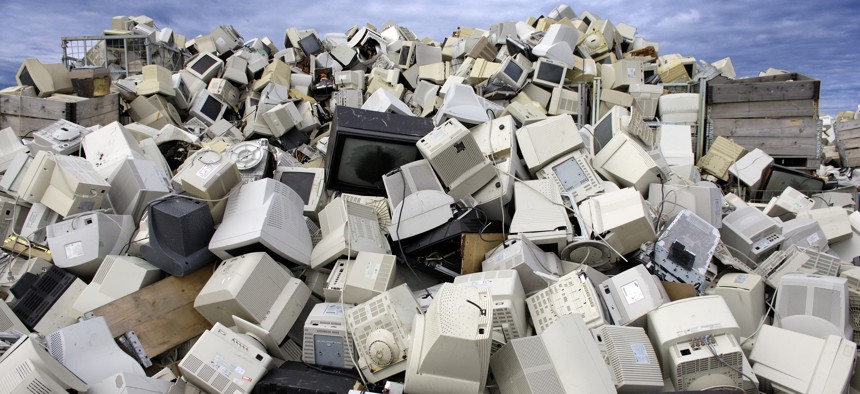Emissions from e-waste spiked 53% in 6 years

Eric Audras/Getty Images
Electronic devices are releasing increasing amounts of toxic emissions into the environment, spurring the need for a legal framework to regulate e-waste.
Greenhouse gas emissions into the atmosphere from electronic devices and their associated electronic waste increased by 53% between 2014 and 2020, a new study shows.
That includes 580 metric tons of carbon dioxide in 2020 alone, say the researchers. They estimate that without regulation or a legal framework to extend the useful life of information and communication technology (ICT) devices, about 852 million metric tons of CO2 compounds will be emitted annually from e-waste sources by 2030.
For the study, the researchers set out to quantify the carbon footprint of e-waste and to add to the body of research showing how much e-waste adds to the total amount of greenhouse gases emitted into the environment.
“Reversing the trend of harmful greenhouse gas emissions created because of e-waste into the environment will require strategies for source reduction, including extending the useful lifetime of the electronic products, which will directly address the quantity issue,” says Oladele Ogunseitan, professor of population health and disease prevention in the University of California, Irvine’s Program in Public Health.
“In addition to mitigating climate change, a reduction in e-waste would discourage child labor in mining operations and reduce toxic impacts on the health of workers engaged in waste management.”
For the study in the journal Circular Economy, the team analyzed 1,003 life cycle reports from different manufacturers to determine the amount of carbon dioxide emissions created during the lifespan of the product, which includes the manufacturing, transportation, use, and disposal of the device.
Researchers found that flat-screen TVs were associated with the highest emissions, with about 41% of total cumulative emissions, followed by laptops and tablets, flat-screen computer monitors, desktop computers, mobile phones, computer accessories, printers, and gaming consoles.
Using the same reports, they calculated that if the useful lifetime of information and communication technology was extended, there could be a significant reduction in CO2 emissions.
One hypothetical scenario estimated that 19 to 28 million metric tons of e-waste could have been prevented through a 50% to 100% increase in the useful lifetime of ICT devices between 2015 and 2020 through a “3re” effort—reduce, reuse, and recycle.
“We assume that extending the lifetime of an electronic product such as a mobile phone is equivalent to reducing the production of the same product that would otherwise replace that device because an increase in the useful life expectancy of a device would lead to fewer replacements,” Ogunseitan says.
Another consequence of the global addiction to ICTs is the risk of toxic e-waste exposure to roughly 30 million people in 32 cities that are listed as e-waste recycling centers in 15 countries. Of the exposed population, about 5.8 million are younger than 18 and about 6.1 million are women of childbearing age (15 to 49).
Estimates of the concentration of hazardous metals in the air, water, and soil at recognized sites of e-waste recycling show a significantly higher quantity than permissible standards set by the US Environmental Protection Agency, the World Health Organization and the European Union.
“We have an opportunity to develop an international consensus on a legal framework to support eco-design and source reduction, repair, refurbishment and reuse,” says coauthor Narendra Singh, a sustainability specialist with the British Geological Survey.
“These strategies can be key to efforts toward climate neutrality for the electronics industry, which is currently among the top eight sectors accounting for more than 50% of the global carbon footprint.”
Source: UC Irvine
This article was originally published in Futurity. It has been republished under the Attribution 4.0 International license.





